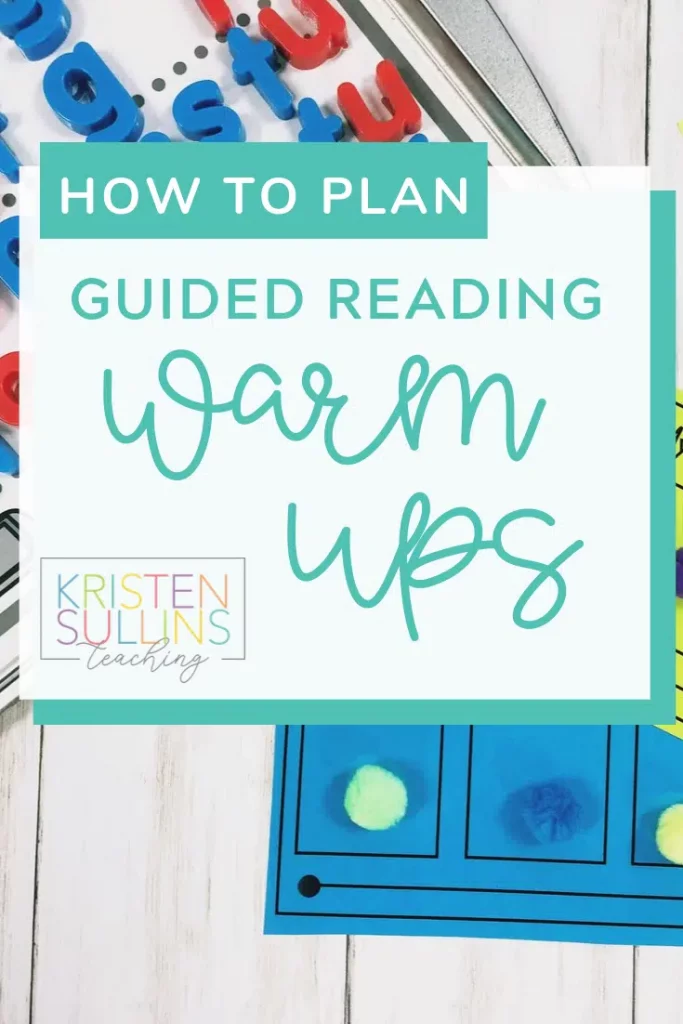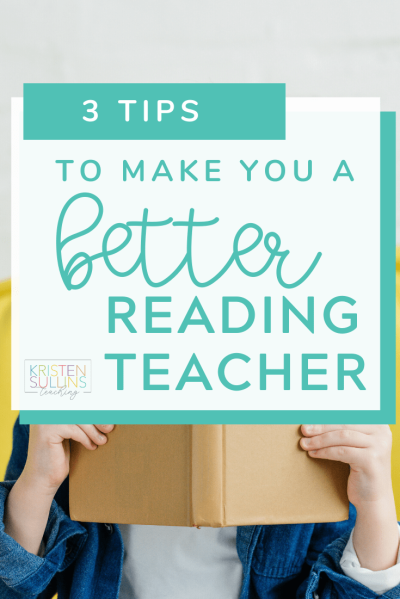I am going into my seventh year of teaching first grade and every year I learn something else that I truly didn't know that I didn't know.
It's always something that I thought I was doing a pretty good job at, but I could really be doing so much better!
This summer I attended the First Grade Reading Academy at my local region center. And let me tell you, there is a lot of things that I truly that I was doing okay at, but I can be doing TEN TIMES BETTER!!
So, I thought I'd share a few of my biggest takeaways with you to help you become a better first grade reading teacher, too!

Reading Tip #1: Model, Model, Model
The more you model your thinking process, the more kids will learn. You need to model EVERYTHING. You need to model how to “think aloud”.
You need to model your expectations. You need to model how to read with a partner. You name it, you model it. You honestly cannot model enough.
I think one thing we often take for granted as adults, is how easy it is for us to problem solve and visualize things through in our head. A lot of students don't know how to do that yet.
You tell students to “tell me what you visualize when I say ____”, well some students honestly don't know how to create a picture in their mind, and then we ask them to transfer that thought to paper and…. BAM now they are totally frustrated.
Then come the behavior problems. Chances are, if you have behavior problems in your classroom, they may have (not always), stemmed from a lack of modeling clear expectations and procedures for your students.
So, how do you avoid all of this? MODEL!! Modeling brings invisible thinking to life.
Reading Tip #2: Retell for First Grade Should Be So Much More
Part of our reading academy was spent comparing first grade skills to kindergarten and second grade skills. When discussing comprehension skills, we looked very specifically at story retell.
Our presenter was very adamant that by October of first graders students should not longer be expected to do a story retell with a simple beginning, middle and end. Instead, she emphasized that students should be doing a four part story retell using First, Next, Then, Finally.
Her reasoning for this was to build a strong foundation for summarizing. Now, summarizing is not a skill that is required in first grade, but it is a key component and a low scoring section of our state assessments. If we can take that extra step and help our students build a really good foundation in first grade, we will be helping them out exponentially in future years.
And, if we are being honest again, how hard is it to retell a book in just three parts? It sounds like more work, but adding that fourth element actually makes the story retell easier.
Another thing she emphasized was that a story retell has four “parts”, not necessarily four “sentences”. So if you want a way to really challenge your higher students, challenge them to write eight sentences or more.
One last tip, she said to pick five graphic organizers to use those organizers the entire year and do not change them. I know we always think we need to change things up to make them fun, but every time you introduce a new organizer, you are not only have to teach or practice a new skill, but now you are teaching a new organizer and new expectations for that organizer.
Reading Tip #3: Make Time for Oral Language
When I think of oral language, even the state says that oral language should be mastered Pre-K. But the reality is, many of our students do not attend quality Pre-K programs and in the state of Texas, they aren't even required to attend Kindergarten!! So when do they build those oral language skills? You got it, FIRST GRADE!!
Oh my heavens… I'm supposed to have a student on a Level J by the end of the year and they came to not even able to spell their own name?? But we pull our superhero capes on and we do whatever we need to do to help that first grade student succeed.
You build oral language with the same questions you use to build comprehension skills, but they have two entirely different purposes/outcomes.
When reading a book or telling a story, ask “Who, What, When, Where, Why and How”.
When building oral language, you are asking those questions to “pull” or extend their story and get them to tell you more. If a student can extend a story orally, then we cannot expect them to do it in written form, or understand or extend their thinking when reading a story.
Need some resources?? The Florida Center for Reading Readiness has TONS of great resources for K-1 for FREE!!!!
BONUS: Tips for boosting reading fluency
The first stage of reading is learning how to decode and sound out the words. The second stage of reading is learning how to do that quickly and in a natural sounding way!
There are countless reading activities that can help students become efficient readers.
But the success of reading activities depends on something that most teachers don't talk about… having fun! If students are having fun, they are naturally going to read better and faster!
[Click here to read 10 FUN activities to increase reading fluency]
4 Easy Tips for Improving Reading Fluency
-Model fluent reading : First grade students need to hear what they SHOULD sound like when they are reading and as teachers, we need to model it for them. Put simply, students need to know the expectation for oral reading.
-Book Repetition : Reading the same book multiple times might seem silly, but it is really beneficial for first grade students because it helps them transition between the decoding and fluency stages of reading. During the first read, students are working hard at decoding. But by the second or third reading, students are familiar with the words and can focus more on how fast they are reading or what they sound like.
-Sight Word Phrases : Practicing short phrases or word ladders can be done super quickly and it’s great to send home for parents; this is also a great strategy for learning sight words because it helps students learn them in the same context they will most likely see them in a book
-Go Down Two Reading Levels : You can have students go down two reading levels below their current instructional level a few times a week. This strategy will help students build their words per minute because they are not having to work so hard at decoding; it will also help build student confidence which is KEY for improving reading fluency in first grade.
First Grade Reading Comprehension Activities
Ready to have comprehension tools at your fingertips for the entire year? This YEAR LONG Curriculum is a 10 unit system of Reading Comprehension Skills that you can refer back to AGAIN and AGAIN!
I not only wanted a solid library of resources to pull from, I wanted to make sure that the activities we were using were MAKING A DIFFERENCE!
This reading comprehension curriculum has given me the confidence and structure that I needed to boost my students' comprehension skills.
I can't wait for it to do the same for you!
Don’t take my word for it, here’s what other teachers are saying about it:
Worked great for my lesson plans. -Amanda M.
Just started introducing these photos to my students so they know how to write a detailed inference. Thank you for these great photos! -RJ
I really like how I can break down this resource into the different parts of Author's purpose. The students seem to be able to navigate the slides easily and complete it independently! Thank you! -Sarah K.
Love the slides and the picture prompts that are included. The students are engaged! -Karen P.











